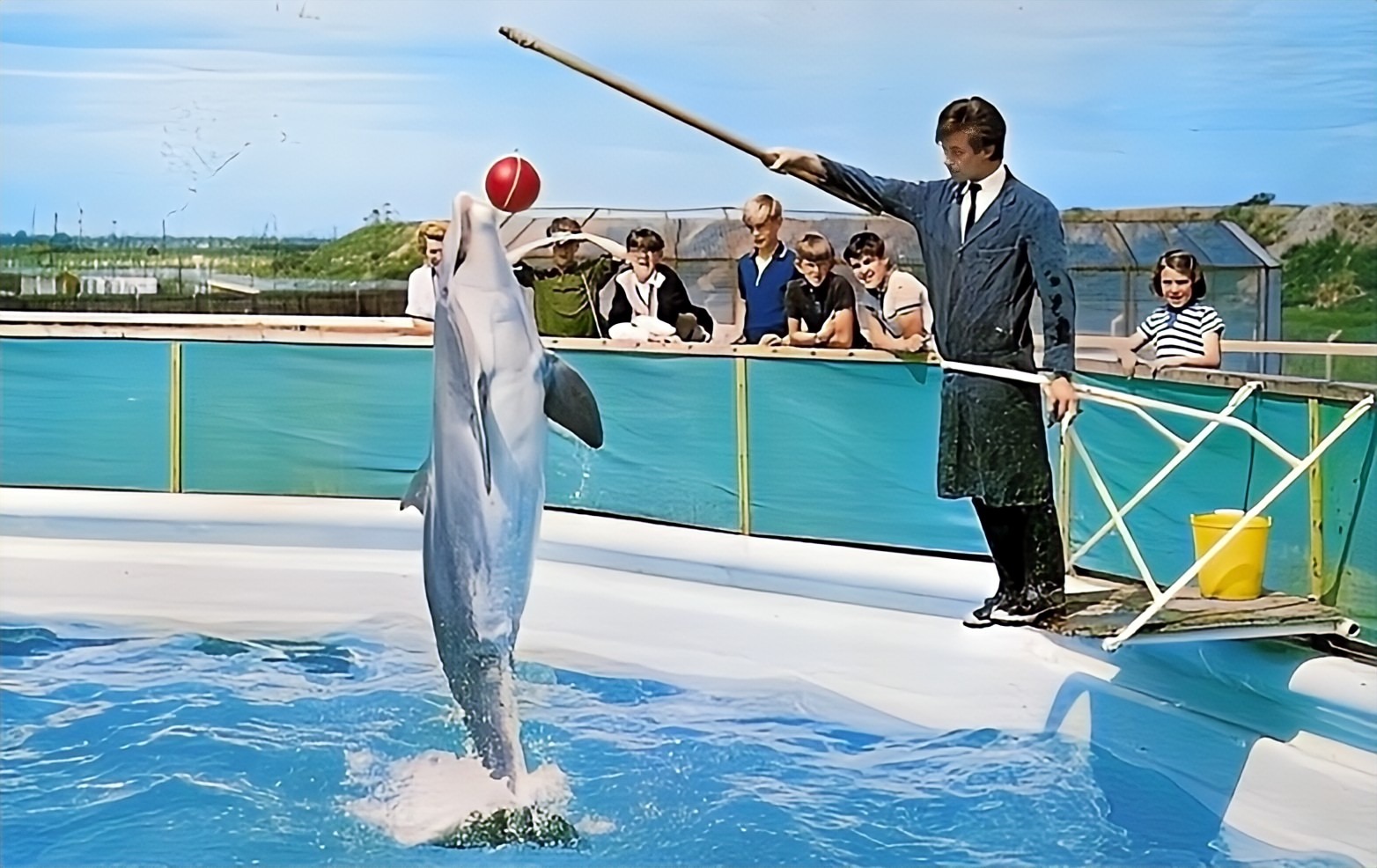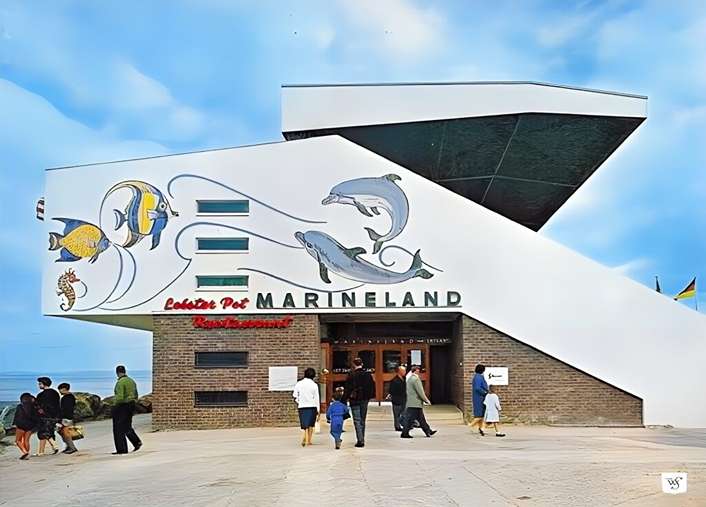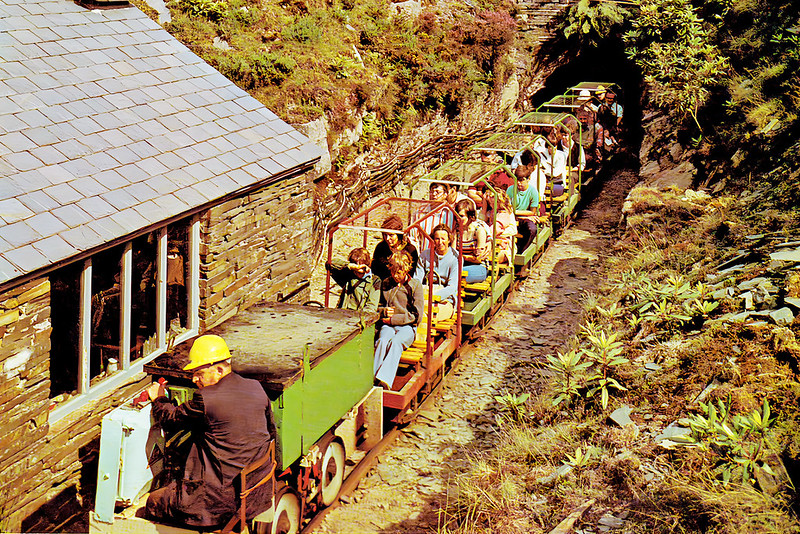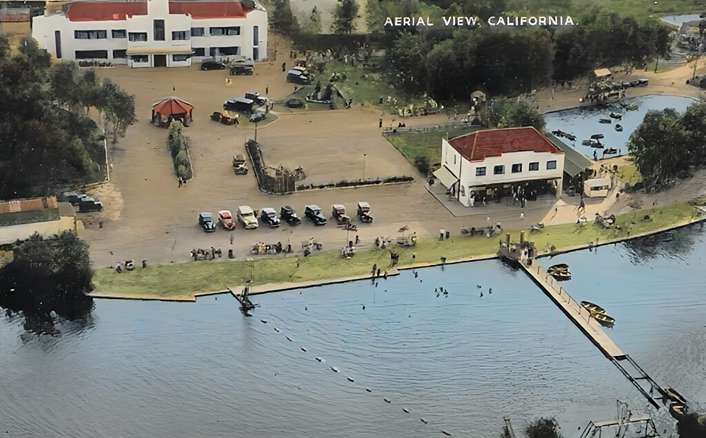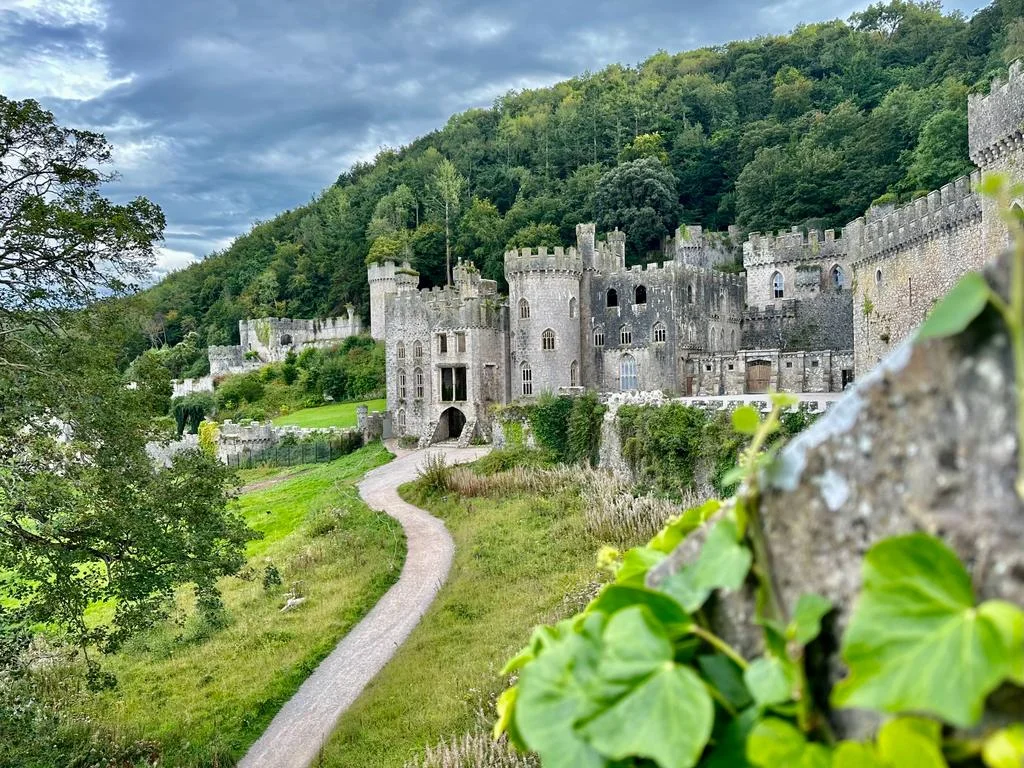During the 1950s businessman Pentland Hick acquired a chain of cinemas including the Gaiety Cinema (Scarborough), the Star Cinema (Bradford) and the Central Cinema (Pickering). He was also involved in writing and producing theatre shows and often appeared on stage himself.
In 1961 he formed the Yorkshire Zoological Company with the aim of developing the grounds of Kirby Misterton Hall into a new zoo. It opened later that year and was known as Flamingo Park Zoo.

He went on to develop the site into a thriving attraction which allowed him to acquire several other zoos along with caravan parks and other assorted attractions. These were operated under the name of Associated Pleasure Parks (APP). In 1974 Flamingo Park changed its name to Flamingo Land and is still open today.
In 1963 Mr Hick approached Cleethorpes council with the idea of building a new zoo. A 23 acre site to the south of town was considered ideal, with a further 18 acres available for future expansion. The council were keen to see it happen and a complicated deal was arranged with both parties agreeing to pay for different things with any profits being divided up. The agreement was for 21 years but the zoo operators could walk away at any time. The council pledged to invest up to £50,000 which included building the road network, sewers, drainage and cafe. The parks department planted a thousand trees and shrubs.
Cleethorpes Marineland and Zoo was opened on 29th May 1965 by TV personality Johnny Morris. It was designed to be run as an offshoot of Flamingo Park and a lot of the animals returned there every winter as it offered better facilities. APP were known for swapping animals around between its different zoos so the collection often changed from year to year.

An early building was the tropical bird house which featured a fibreglass parabolic roof. The zoo also contained lions, a monkey house, elephant house and penguin pool, along with a two-ton elephant seal named Magog. They also had two Indian elephants named Fred and Tania.

One of the main attractions were the dolphin shows. Three fibreglass tanks were installed, each 40ft in diameter. Two were 5.5ft deep and one was 9ft deep. A zoo official later stated that using fibreglass was a bad idea “we’ve had nothing but trouble and expense with these tanks. They were a mistake right from the start”.

4 beluga whales were shipped over from Canada on a 3,500 mile voyage on the steamer ship Arcadian. But only one arrived. Two were washed overboard in a storm and the third one died. 3 dolphins were flown over from Florida named Ringo, Lisa and Pepe.
In December 1969 a 3-year old killer whale named Calypso arrived from Vancouver. At 18ft long and weighing two tons it was said to be the largest mammal to ever travel by air. It was due to stay in Cleethorpes for 6 months as its new home at Marineland France was not quite ready. He left in June 1970 but sadly died in France 6 months later.

In 1968 the orangutans were replaced by chimps as they had grown too big. Also that year their 8-year old bull elephant Freddy died and was hauled away by a local processor.

In November 1969 APP was taken over by Scotia Investments, a company that owned a number of gambling establishments and bingo clubs . At the same time Scotia also acquired Dudley Zoo for £480,000. Mr Hick became a shareholder and director of Scotia along with Don Robinson and Robert Gibb.
In 1970 two more dolphins arrived from the USA – Luke and Freckles. In 1974 an African bird-eating spider, described as being “as big as a saucer” escaped from the van which was transporting it from Dudley Zoo to Cleethorpes. Despite an extensive search it was never found.
In January 1975, Scotia Investments announced that it no longer wished to operate the loss-making zoo and handed it back to the council and walked away, taking most of the animals with them. It seemed unlikely that the zoo would open for the 1975 season. But the council were determined to keep it running and came up with a rather unusual idea—fibreglass animals!
This decision was not well-received, but the council proceeded nonetheless, spending £6,000 on a selection of “plastic animals” and rebranding the site as Cleethorpes Pleasure and Animal Park. New play equipment and a selection of kids amusement rides were added. By the end of the season, despite everything, the venture was considered quite successful and the fake animals proved a huge hit with kids who could climb all over them. It was repeated again the following year.
In 1976 Scotia also announced they were pulling out of loss-making Dudley Zoo and announced it would close unless someone came forward to buy it. A rescue package was launched which resulted in a charitable trust being formed between Bristol Zoo and the local council with both providing necessary funds. More money was raised via a public appeal. The following year former Scotia director Robert Gibb became the sole owner of Flamingo Land. During the early-1980s Scotia was forced to shut down due to shady dealings and Pentland Hick was said to have lost everything. He died in 2016.
In March 1977, a London-based company called Colossus Ltd approached Cleethorpes council with an interest in taking over the zoo. A partnership deal was struck, and several real animals were brought back including lions, tigers, bison, camels, ponies, and Louisa, a 12-year-old elephant. Later that year Aberdeen Zoo closed down and Cleethorpes took their 3 lions, 3 wolves and a pair of dingos, even though they already had 8 lions of their own!
After a successful first season the council granted Colossus full control of the zoo in April 1978 with a 21-year lease at an annual rent of £25,000.
But that summer, things took a bizarre turn of events. Without going into too much detail, both of the zoo directors decided to run away with younger female companions. The irate wife of one of the directors was left to run the zoo on her own. The story made all the newspaper tabloids with the Daily Mirror calling it a “zoo love tangle”.
At the end of the season the council said it had only received £1,000 of the rent. They cancelled the lease and took back the land. One of the missing directors was later tracked down to a caravan park in Clacton where he stated that he feared the business was going to crash and didn’t see any point in carrying on. This time around the council had no interest in reopening the site and in March 1979 an auction was held to get rid of “buildings, sheds, cages and former aviaries”.
Most of the animals were sold off but Hercules the Hippo still remained. For a few weeks he became the most famous animal in Britain as every major newspaper carried the story of how he faced being shot if a new home couldn’t be found. A public appeal raised £6000 and Dudley Zoo agreed to take him and built a new indoor enclosure. An estimated 4000 people showed up at Cleethorpes on his last day. He was moved to Dudley in May 1979 but sadly died 6 months later.

Various ideas for the site were considered including a new sports complex featuring an arena and indoor pool. This never happened and instead a stock car racing track was built which caused many noise complaints from local residents.
During the late-1980s Pleasurewood Hills Theme Park were looking to build another park and the old zoo site was offered to them “more or less free” as the council were anxious to see it developed. Several buildings remained on site, along with the internal roads and paths. Joe Larter, original creator of Pleasurewood Hills, designed a new park which he later said “was a good family attraction but nothing over the top”. A local councillor said the park would make Cleethorpes “the jewel in the East Coast’s crown”.

Construction began in 1990 with a proposed opening date the following year. Contractors dug up various animal remains including whale, elephant and lion bones.
Pleasurewood had recently been taken over by RKF who soon appeared to be struggling after some dodgy investments elsewhere. In October 1990 they declared bankruptcy and all of the Pleasurewood assets had to be sold including the original park, the newly opened Bure Valley Railway, three Sea Life centres and the new development in Cleethorpes, which was only half built.




In August 1991 the Cleethorpes park was taken over by Robert Gibb, former director of Scotia and now owner of Flamgo Land. Construction restarted and it opened in May 1993 as Pleasure Island.

Two years later Mr Gibb tragically died in a car accident. The park continued to be run by his family as an offshoot from Flamingo Land. Sound familiar? In 2010 the park suddenly closed following a family dispute but later reopened under the control of Gibb’s daughter Melanie. It no longer had any official connection to Flamingo Land.
Sadly the park closed in 2016 due to declining visitor numbers. The site was sold in 2020 and nothing much has happened but plans call for a new holiday park with nearly 300 cabins and a couple of hotels.
